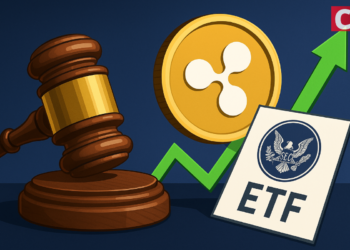Key Notes
- Ripple CTO states XRP has no issuer, difficult centralization claims.
- XRP Ledger lacks rivalrous options, decreasing central management dangers.
- The centralization and decentralization quest amongst protocols is turning into a defining characteristic for dominance.
David Schwartz, the Chief Know-how Officer at blockchain funds agency Ripple Labs Inc, has tried to straighten the narrative that XRP
XRP
$2.22
24h volatility:
0.8%
Market cap:
$129.99 B
Vol. 24h:
$2.17 B
is below centralized management.
In his X submit, he defined that “XRP has no issuer” and that Brad Garlinghouse is just the CEO of Ripple as an organization.
Decentralization is Past Definition
The dialogue about who controls XRP has been ongoing within the Ripple ecosystem for fairly some time. Lots of these asking questions in regards to the protocol’s decentralization are involved that Ripple’s high-profile management is a time bomb ready to blow up.
This time round, there are contemporary questions in regards to the matter on X.
“If XRP is decentralized, then why is Garlinghouse the face of it and Ripple the issuer??” One X person requested. “I don’t see the identical association with BTC.”
Trustworthy query:
If XRP is decentralized, then why is Garlinghouse the face of it and Ripple the issuer??
I do not see the identical association with BTC.
— John Puruntong (@GeorgetheHack) May 27, 2025
In response, Schwartz clarified that XRP has no issuer as all of the cash had been created from the time of the ledger’s inception. This counters the centralization claims, though Ripple is accountable for distributing XRP.
The agency’s CTO strongly suggested that different standards be used to guage a protocol’s decentralization.
Garlinghouse is the CEO of Ripple, an organization. XRP has no issuer — all of the XRP that may ever exist was created when the ledger was created. Not like most different blockchains, XRPL has no rivalrous options, so the ledger itself cannot actually do the preliminary distribution past letting…
— David ‘JoelKatz’ Schwartz (@JoelKatz) May 27, 2025
He recommended focusing extra on desired outcomes like guaranteeing reliability and stopping management, fairly than simply on definitions.
The Ripple CTO highlighted the absence of competing options on the XRP Ledger, citing that it doesn’t compete for assets like different blockchains. On this premise, it’s much less susceptible to central manipulation.
For these nonetheless questioning whether or not XRPL is decentralized, the Ripple CTO suggested, “Ask your self what you wish to make sure will occur and what you wish to make sure gained’t occur. Then take into account what it could take for the belongings you don’t wish to occur to really happen, or for the belongings you do wish to occur to fail to materialize.”
He shared this considerate response to encourage the neighborhood to mirror on the basic the reason why decentralization is necessary to them in a blockchain.
Ethereum L2 Base and Potential Centralization Dangers
These discussions about centralization dangers have gotten a development within the blockchain ecosystem.
Earlier this month, Ethereum co-founder Vitalik Buterin shared his perception on the matter, stating how protocols can scale. Levels 1 and a pair of of decentralization contain permissionless fault-proof options and safety councils decreasing centralized management. That is thought of a hurdle for many chains to attain.
Like different Ethereum Layer-2 options, the Base community, developed by Coinbase Global Inc. (NASDAQ: COIN), has been engaged on turning into extra decentralized. It has made progress with Stage 1 decentralization by releasing its permissionless fault-proof solution, which goals to reinforce safety by eradicating central management from a single entity.
It additionally marked a major milestone for the platform and the broader Ethereum ecosystem. By design, the launched permissionless fault-proof system enhances the general validation course of. It allows anybody to suggest or problem claims in regards to the community’s state in a permissionless method. Therefore, if an invalid declare is made, others can problem it utilizing the fault-proof mechanism.
How decentralized a sequence is could decide which Layer-1 chain will dominate sooner or later.
Disclaimer: Coinspeaker is dedicated to offering unbiased and clear reporting. This text goals to ship correct and well timed data however shouldn’t be taken as monetary or funding recommendation. Since market situations can change quickly, we encourage you to confirm data by yourself and seek the advice of with knowledgeable earlier than making any selections primarily based on this content material.

Benjamin Godfrey is a blockchain fanatic and journalist who relishes writing about the actual life purposes of blockchain know-how and improvements to drive normal acceptance and worldwide integration of the rising know-how. His want to teach folks about cryptocurrencies evokes his contributions to famend blockchain media and websites.



















